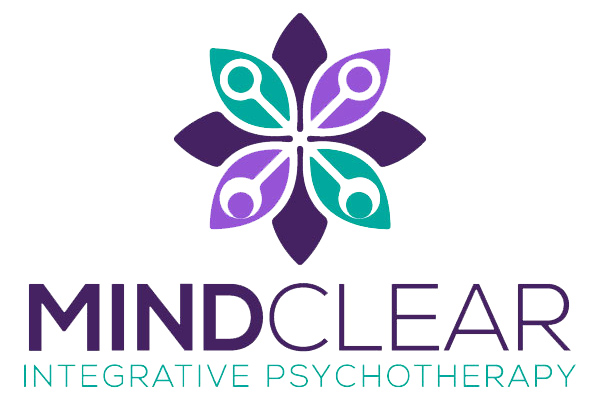Oops You Did It Again:
Changing Frustrating Patterns

Photo by Samuel Yongbo Kwon on Unsplash
Do you often find yourself wondering how on earth you possibly get yourself into the same patterns over and over ? Maybe it’s another emotionally distant relationship, an overly involved friendship, or trouble in the workplace that makes you feel overlooked – again. It feels like a cycle of painful déjà vu that you can’t seem to stop.
You might be able to notice the patterns and name it, but it somehow keeps happening. You might feel frustrated by your decisions, confused about what you could do differently, or even ashamed of these repeated patterns. It’s not that you want to repeat that past –you just keep getting pulled back into it.
This re-creation of the past is your brain doing exactly what it is designed to do – protect you.
The human brain is hardwired for survival, which is rooted in familiarity. This means always knowing what to expect. So, even when the familiar is painful and you might want to change and break free, another part of your brain decides it’s safer to stick with what you already know.
This can be especially true if in the past you learned that unpredictability meant danger, as most trauma survivors have.
Understanding why you might recreate your past is not about blaming or shaming yourself. Rather, it’s about making sense of your actions. Your patterns, however frustrating, are rooted in very real survival strategies.
Being able to actually change these cycles is learning that you no longer need to be in survival mode. It’s the beginning of the challenging, but powerful, process of choosing something new.
Core Beliefs Underlying Patterns
When you grow up in an unstable or chaotic house, it does not just impact you for a single moment. By being on high alert while living in an environment where love, safety, or stability are inconsistent, you adapt. You learn what you need to do to protect yourself to avoid harsh reactions of rejection, criticism, or shame. This constant uncertainty shapes how you relate to yourself and to others.
This is where patterns begin.
The longer you are in such an environment, especially as a child, you form certain “core beliefs.” These are deep-rooted, automatic thoughts that shape your identity and what you think you can expect and deserve from relationships. Your core beliefs are woven into the way that you see the world and show up in every part of your life – romantic relationships, friendships, the workplace, and so on and so forth. These beliefs might sound something like…
-
- I am not enough.
- My needs are a burden.
- I must stay quiet so that I am safe.
- I’m the problem.
- People will always leave me.
These beliefs came from key relationships that made you feel this was very true. To believe these things may have been protective and necessary for you. For instance, if you believe that you are defective or a problem, you’re far less likely to fight back. This can maintain your relationship with, say, a parent and also minimize criticism or abuse coming your way.
As an adult, however, they continue to operate in the back of your mind and underlie your entire existence; quietly influencing the way that you perceive a new situation, what you believe about yourself, and what you believe you are allowed to ask for or expect. These beliefs shape everything.
Familiarity = Survival
Let’s take a step back and talk about the neuroscience behind this phenomenon. Your brain is built to prioritize safety. Evolutionarily, this has served humans as it keeps us going and alive.
Once a particular pattern – an emotional one and/or a relationship dynamic – has been established, the brain clings onto it. This is simply because then the brain knows how to predict what is coming next and how to survive it. So, even if a pattern is painful, it is familiar. It’s familiar to feel like you are the problem, unlikeable, a burden.
With a brain that has been shaped by trauma, this familiarity feels safer than unpredictability. It’s better to assume that you are the problem, and, in turn, to isolate yourself from others or do everything by yourself rather than get rejected or humiliated again.
For example, a safe and stable relationship might feel threatening or even boring. Your brain might be searching for the chaos that you once associated with receiving, or even being deserving, of love. Or, an understanding or kind boss might feel like a trap, like you can’t trust that someone might be willing to listen to you or help you. Or, that setting a healthy boundary might feel selfish, like you are wrong for expressing a need, because someone in the past consistently lashed out when you did so.
Emotional Rollercoaster of Repetitive Patterns
Finding yourself in this repeated cycle can be incredibly maddening and take you through a range of different emotions. Shame can come from questioning what it is that’s wrong with you that you can’t escape your past. You might feel hopeless that you’ll be stuck in these patterns forever. Or, you may even have feelings of confusion because you can recognize the patterns but can’t seem to stop them.
All these responses are perfectly normal. It is understandable to feel a whirlwind of emotions when you are taking a deep dive into who you are and learning to understand yourself. These emotions come from the confusing space of recognition and embodiment.
Recognizing your patterns allows you to begin uncovering those core beliefs. You also can find the root of them and learn to anticipate when and how they are showing up in your day-to-day life.
This middle space is confusing, frustrating, and, quite frankly, annoying. You might know that setting a boundary is healthy, but still feel incredibly guilty or anxious after you do so. You might know that your partner loves you but feel undeserving or concerned that they might take it away when you have conflict.
This is because you’re reacting to old data, and working on building new beliefs that challenge your old ones. It’s part of the process of healing. Bridging the gap between the intellectual brain and the felt experience is one that takes time, patience, repetition, and a willingness to tolerate the discomfort.
Breaking Free of the Patterns
Recognizing your patterns is the first step to breaking free of them. After that, it’s about repetition, support, and compassion. It takes time for your brain to learn a new way of existing, especially when the old way was protective for so long.
Though it can feel exhausting and scary, healing is possible. As much as the brain loves predictability, it also holds the capacity to learn – to form new connections and to unlearn the old ways of being. Just like you learned that being silent means being safe, you can re-learn that you are allowed to take up space.
This healing can come from relationships that are safe. For example, the therapeutic relationship is an example of a space that might, at first, feel highly uncomfortable, but ultimately incredibly freeing. The lived experience of safety, being seen, and supported can help to slowly challenge your past beliefs and rewire your brain’s expectations of how people will act.
The shift from your old beliefs is challenging, slow, and definitely not linear. But they happen with each new choice you make for yourself.
Know that being stuck in these loops does not mean that you are broken. Your brain and body are simply acting in the ways that they are hard-wired to do. But just because you learned to adapt to certain environments and developed deep, core beliefs based in those experiences, doesn’t mean they can’t change.
With patience, compassion, and learning to trust yourself, you can unlearn these past patterns and choose a different way of moving through the world. You don’t have to always exist in survival mode. You deserve to feel safety, freedom, and happiness.










Leave A Comment